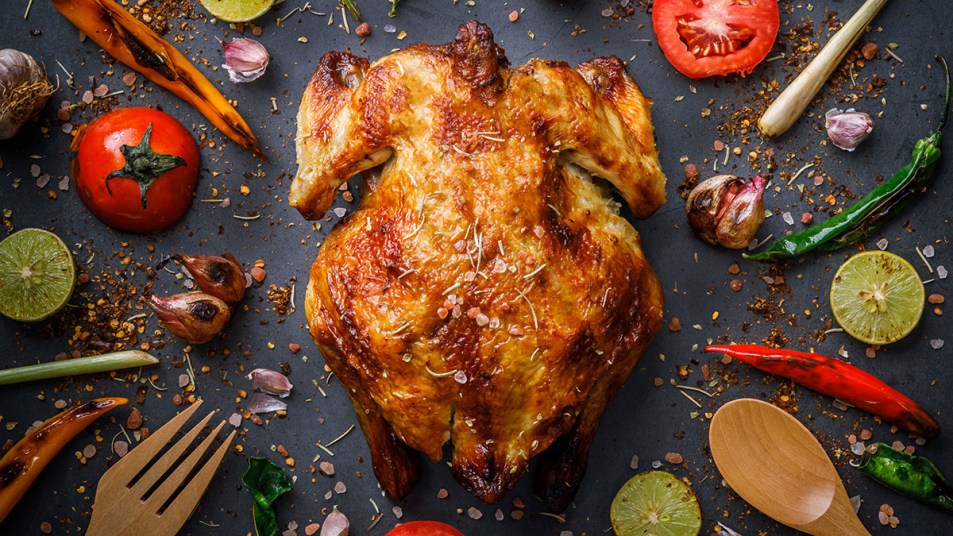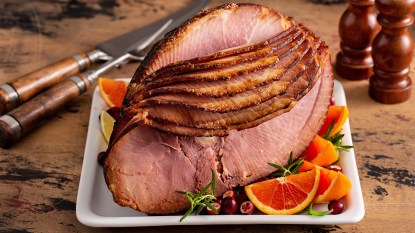You Should Start Thawing Your Thanksgiving Turkey a Lot Sooner Than You Think
Plus three other tips from a turkey expert!

For over 40 years, one service has always been there for anyone who needs Thanksgiving help: the Butterball Turkey Talk Line. The resource, which started with just six people answering the phones, has evolved over four decades to meet the needs of a growing audience. To celebrate the season, we chatted with a turkey expert who told us her tips for the best turkey — and when to thaw your bird.
Butterball Turkey Talk Line supervisor Andrea says the service has grown to about 50 people ready to answer the most pressing questions. But of all the things they get asked, Andrea says questions about thawing the bird always come up most. “People just don’t really realize that a large Turkey takes a long time to thaw in the refrigerator,” she says. “We always tell people to plan one full 24 hour day for every 4 pounds.”
So, if you have a 20 pound turkey in your freezer right now, it’s going to take up to five days to fully thaw out. That means you can’t just leave it for before the big day, and it’s why Andrea and her colleagues call the Thursday before Thanksgiving “National Thaw Your Turkey Day.” Since the bird can last four days after being thawed, it gives most people the perfect timeline to have it ready by Thanksgiving.
Want more from Andrea? Here are the top three tips for how to make the perfect turkey.
1. Plan ahead.
We can’t leave Thanksgiving prep till the last minute. Andrea says her number one advice is for people to plan ahead when it comes to thawing and prepping your turkey. “People just don’t pay attention to that. They’re always thinking about roasting, but don’t get the turkey thawed,” she says. “You don’t want to have ice crystals and a little bit of the meat frozen because you’re just going to end up having to cook it longer. So number one is planning ahead to thaw.”
2. Get a meat thermometer.
Most casual cooks don’t invest in things like meat thermometers, but it’s time to add one to your kitchen supplies (Buy from Amazon, $15). The handy device will ensure you have the perfect turkey. “That’s your best friend on Thanksgiving Day,” she says of the thermometer. “The proper temperatures that Butterball recommends for eating quality and food safety are 180 degrees Fahrenheit in the thigh and 170 degrees Fahrenheit in the breast area. And then if you’re going to stuff the turkey, you need to test the stuffing as well. It’s 165 degrees Fahrenheit for the stuffing.”
The extra step will pay off: “Roasting to those perfect temperatures is going to give you that moist, juicy turkey,” Andrea says.
3. Let it rest.
This is the hardest step. After the turkey is out of the oven, we always want to dive right in and start eating, but that’s not the best way to do it. “Letting it rest allows all the juices to redistribute throughout the meat so it gets juicy,” says Andrea. “And when you carve, the slices are so much nicer if you’ve let it rest.” She says the best way to make sure that happens is to get your turkey cooked an hour earlier than you want to eat. Then cover it with foil or a kitchen towel to insulate it. (For more on the benefits of resting the meat, click through to our guide on how to cut turkey.)
And always remember, if you need any help, call the Butterball Turkey Talk Line at 1-800-BUTTERBALL or text 844-877-3456. You can also use your Amazon Alexa for help. Simply say, “Hey Alexa, ask Butterball,” and your question will be answered by one of the members. Happy Thanksgiving!













